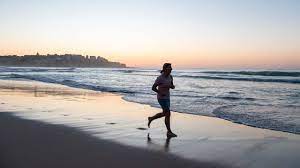KEY POINTS
- Half of Australia is experiencing a heatwave this week due to hot air pushed east from Western Australia.
- Sydney residents are being warned that temperatures will soar into the low-or-mid 40s on Saturday.
- Experts explain how to spot heat exhaustion vs heat stroke, alongside tips to stay cool.
Australians are being warned of the effects of prolonged heat exposure and how to spot the signs of heat stroke as the country sizzles through
According to the Bureau of Meteorology (BOM), four states recorded temperatures above 45C on Wednesday, in conditions that are expected to persist into the weekend.
“This particular burst of heat is leading to temperatures between eight to 16 degrees above average through parts of South Australia, NSW, and Northern Victoria,” he told SBS News.
While 473 heat-related deaths were officially reported in Australia between 2001 and 2008, a 2020 study by an Australian National University researcher found the true association could be estimated at 36,000 deaths between 2006 and 2017.
What can you expect this weekend?
On Friday, the forecast top temperature in Adelaide will be 36C while Melbourne’s top is expected to be 33C.
The BOM predicts NSW will be the focus of the heat over the weekend, as a cold front brings relief for WA, the Northern Territory, and South Australia.
The BOM has issued heat wave warnings for the NSW Hunter region, Central and Southern Tablelands, South Coast and Western Districts.
Signs of heat exhaustion vs heat stroke
Exposure to high temperatures for extended periods puts the body under huge strain and can cause several heat-related illnesses ranging from dehydration to heat stroke.
Dr James Smallcombe, research fellow in the Heat and Health Research Incubator at the University of Sydney, said it was important to know the difference between heat exhaustion and heat stroke.
“Lots of people use the word heat stroke when they actually mean heat exhaustion,” he said.
Heat exhaustion symptoms develop at fairly modest temperatures and signs include feeling lethargic, having a headache or feeling a little nauseous.
“The types of symptoms that you might experience if you’ve got heat stroke include feeling confused, disorientated, and feelings of agitation,” he said.
“Some of the more serious things include convulsions or even finding yourself in a coma … So it really is a medical emergency that needs rapid treatment.”
How do you stay cool and safe?
NSW Health has warned about the effects of heatwaves on vulnerable people, including those over 65, babies, young children, pregnant women and the homeless.
Smallcombe said the elderly were at greater risk because above the age of 60 we lose the ability to sweat as much, which is our most effective tool to keep cool.
He advised people to drink an extra 250ml of water per hour to replenish some of the sweat loss during sweltering days.
- Using water to wet the skin and cool down, including a cold spray or damp cloth.
- Using electric fans for temperatures up to 35C but said above 40C they accelerated the amount you heat up.
- If a fan is on, bump up your air conditioner to 27C as it will keep you efficiently cool and save 70 per cent of the energy used.
- Loosening or removing clothing.

He also cautioned parents and caregivers to wet cloths, if they were using them to cover prams, as dry ones could trap heat and make the temperature inside the strollers up to nine degrees hotter.
NSW Health advised residents to avoid being outdoors during the hottest part of the day, avoid vigorous exercise, wear sunscreen, sunglasses and hats and stay hydrated.












